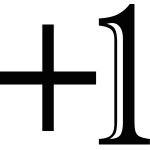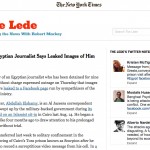Monthly Archive:: June 2014
29 Jun 2014
Extra credit question: What’s wrong with extra credit?

So I read a blog post today that railed against the horror of offering students extra credit: Few things agitate me more than a student who asks for extra credit either in lieu of the learning activities provided at a time or to just boost a grade. School is about learning NOT points or even
26 Jun 2014
How to build a better journalism school: Part 7, trades & professions

One of the first reactions to this series of posts on journalism schools was from my friend Curt Chandler, professor at Penn State. He saw a gap in my proposed curriculum: discussion of “innovation, disruption, the business of freelancing and other practical issues facing modern reporters.” In fact, the initial spur to create this curriculum
25 Jun 2014
4 thoughts about news site blogs after The Lede’s demise

The New York Times is shuttering its The Lede blog, and an editor told Poynter that in time, about half of the site’s current blogs will vanish. The Times cites several reasons, including: Little traffic to the main pages of individual blogs; most came from social sharing or the site’s home page. Little traffic at
25 Jun 2014
How to build a better journalism school: Part 6, breaking news and beats

In some form or another, almost all the journalism schools I’ve looked at (about 20 top programs) include a class — most often required — that involves beat reporting. This description from Boston University is typical: Students learn to cover a city neighborhood or a nearby community beat. Students will branch out across the city
24 Jun 2014
How to build a better journalism school: Part 5, storytelling

The most common way journalism schools have adapted to a changing industry (at least based on my small survey of about 20 top programs) is the insertion into the curriculum of a course called, most often, “multimedia storytelling.” This course description, from Northwestern, is typical: Introduction to using multimedia skills to create effective web-based journalism.
23 Jun 2014
How to build a better journalism school: Part 4, grammars

I had a traditional education in journalism school, focused on newspapering. That includes learning several rules for writing headlines — cutting out forms of the verb “to be,” not breaking phrases between the first and second lines of a multi-line headline, making all the lines of a headline roughly the same length. Rules like that
20 Jun 2014
How to build a better journalism school: Part 3, facts and truth

One of the required courses in the journalism bachelor’s program at Washington and Lee University is called “Beyond Google and Wikipedia.” It comes before reporting. The course description from the syllabus: An introduction to information sources that academic researchers, journalists, public relations and advertising professionals rely on increasingly in the digital age to conduct scholarly
19 Jun 2014
How to build a better journalism school: Part 2, breaking silos

In many of the undergraduate journalism curricula I’ve reviewed recently, students spend a lot of time in mode-of-delivery silos: writer/editors separated from broadcasters separated from photographers. In some cases, magazine students are isolated from those fedora-wearing news people. In my ideal journalism school, most of that changes. Students learn that while each modality has its
18 Jun 2014
How to build a better journalism school: Part 1, the core curriculum

Many journalism schools are reconsidering their curricula, trying to adapt to industry changes. Much of the discussion has focused on technology and entrepreneurial skills. Over the next several posts, I will propose and defend an alternative approach. To start, here’s how I would set up the core of an undergraduate journalism program designed to be
